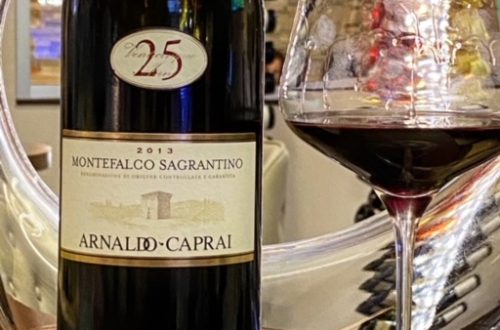Pop That Cork for International #Champagne Day! #Wine
How Do You Celebrate #InternationalChampagneDay?
I don’t know about you, but there is always something special about popping a cork and pouring some bubbly. This is especially true when the bubbly happens to be champagne. The packaging alone makes one feel special and feel like celebrating, because Champagne is really a party in a bottle! You scream, I scream and we all scream for Champagne! Well, guess what? The last Friday in October is annually set aside to honor this world renowned sparkling wine. Annually, the third Friday in October is designated International Champagne Day or World Champagne Day. This year, the day falls on Friday, October 21. The Champagne Bureau is poised to help you celebrate this unique sparkling wine. Check out how NY celebrates with New York Champagne Week in November. Also, International Champagne Day in October should not be confused with National Champagne Day, which is always celebrated on December 31st in the U.S.
Champagne had traditionally been poured to celebrate special occasions, honor guests and, well…just because. The sparkling wine is produced from grapes grown in the Champagne region of France. It is usually made from grape varietal blends such as blanc de noires, from black pinot noir and pinot Meunier grapes, as well as blanc de blancs, from white Chardonnay grapes. You will also find rose champagnes.
 |
| Sparkling Pointe |
There are several methods used to make sparkling wine. However, Champagne follows the méthode champenoise. With méthode champenoise, the effervescence, or bubbles are produced by a secondary fermentation. It is important to note that the méthode champenoise is exclusive and can only refer to sparkling wines made in this region (Champagne, France). However, this same method is used at Long Island’s Sparkling Pointe Vineyards on the North Fork to make all of their outstanding sparkling wines, such as Brut Seduction. Nevertheless, although this same method is used in Italy to make Franciacorta, in Spain to make Cava and in other French regions to make Crémant, due to EU regulations, their methods have typically been referred to as the traditional method. The traditional méthode champenoise is slightly more expensive than the Charmat process, also known as the Metodo Martinotti in Italy, which is used to make Prosecco.
In regards to the aging of Champagne, there is a minimum requirement of 15 months before it can be released. Most Champagnes are non-vintage, or produced with wine blends from several years and tend to be less expensive then those that are vintage, or produced from a certain year, as indicated on the bottle. Also, in most cases, in order to produce vintage Champagne, the grapes must be 100% from the year indicated.
When pairing Champagne, many people pair it with sushi, oysters, caviar, and other seafood. Cake and champagne is also typical, of course. Champagne is fine by itself as an aperitif, as well. This is usually how I drink it. However, conventions do not inhibit me. I should also say that I pair champagne with whatever I want, and I drink it before and/or after food. How’s that?

How The Wining Hour Celebrated:
To celebrate International Champagne Day, we poured a favorite-Veuve Clicquot Rosé Champagne . As usual, it was pure pizzazz in a bottle. It smelled fruity, of strawberries, spiced plums and cherries. The palate was similar, as it tasted of strawberries, pink grapefruit, almond and French pastries. This pink bubbly was well-balanced, elegant and delicious, with a refined texture. Veuve Clicquot Rosé Champagne was light, luscious and had 12.5% alcohol. Like most champagnes, it was a blend of Pinot Noir, Pinot Meunier and Chardonnay grapes. This champagne was a real treat, and although I did not pair it with anything, I enjoyed it immensely.

Now, it’s hard to have just one bottle of champagne…so…
We also popped the cork on a tasty Taittinger Brut Cuvee Prestige Champagne! Taittinger was creamy and smooth. It was pale, gold in appearance and had a peach, vanilla and floral bouquet. This champagne tasted of apples, peaches and honey, although not overly sweet and with firm acidity. In fact, the taste was rather complex. On the one hand, it tasted light and fruity, but then on the other hand, it was somewhat smokey and rich. Taittinger champagnes are noteworthy because they are made with a higher proportion of Chardonnay grapes (40%) than most, and they are also aged longer. This one was aged for more than 3 years, which is significantly longer than the typical 15 month minimum for champagne. Taittinger champagne, with it’s 12% alcohol, is also fine on its own, but would pair well with seafood and white meats. Taittinger Brut Cuvee Prestige is a good, quality, affordable champagne that certainly gives other pricey champagnes a run for their money.
But, tell us, how do you celebrate Champagne Day?
What is your favorite Champagne? What do YOU pair with Champagne?
Enjoy your #WiningHour and Happy International Champagne Day! #ChampagneDay
For additional information about Champagne, stemware and more food and wine pairings, check out the following links:
Champagne Glasses for Every Taste & Style
Champagne & Sparkling Wine Perfect for Every Occasion (Epicurious)
Quiz-How well do you know Champagne?
About The Wining Hour
The Wining Hour writes about wine, Italy and global travel. The Wining Hour boutique caters to wine-lovers across the globe by offering all wine-related items. The Wining Hour markets unique wine décor and furnishings, accessories, glassware, barware, wine racks, storage and cooling options, games, gifts and more.
For more information, please visit www.thewininghour.com.
Follow The Wining Hour:






